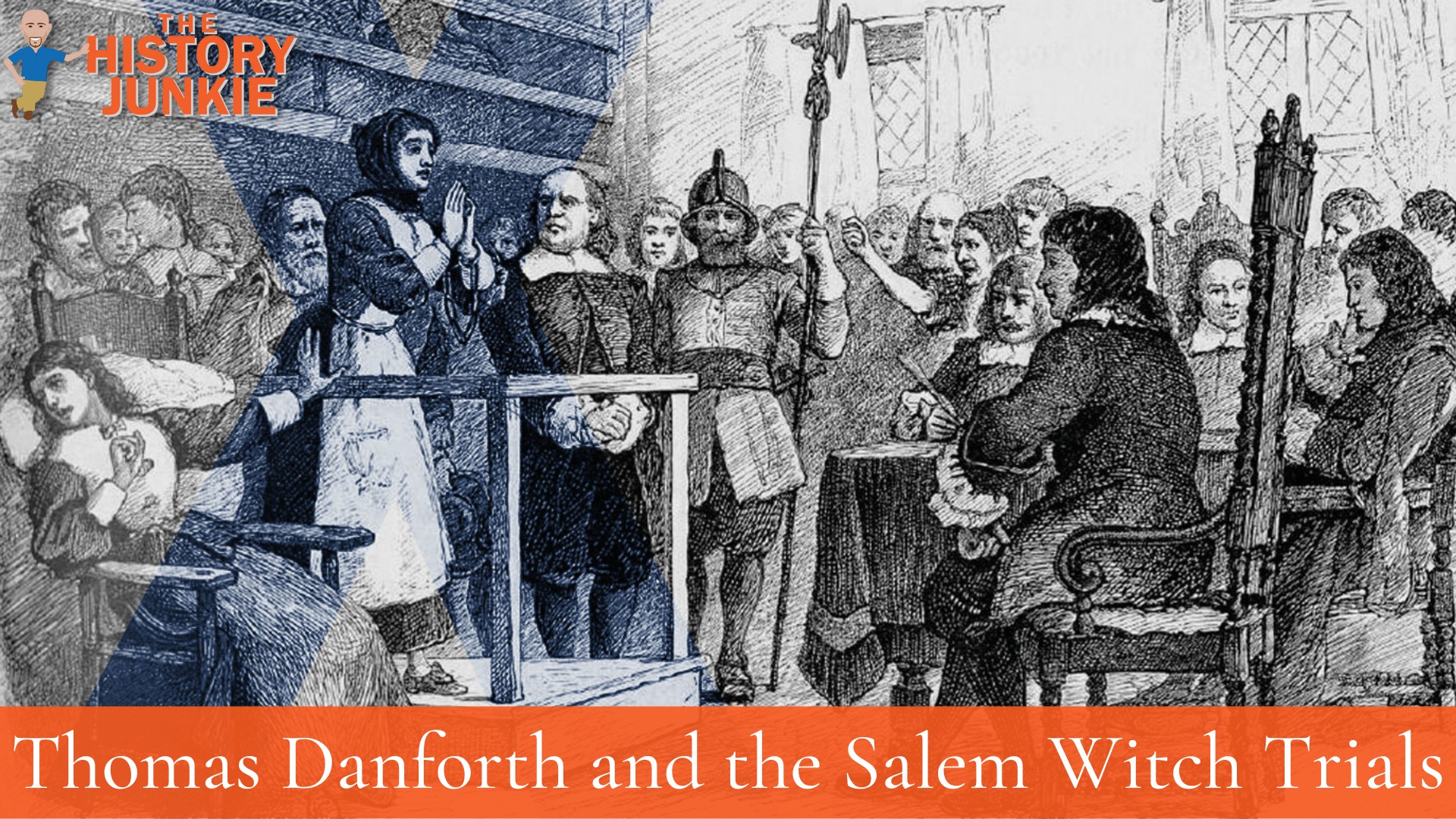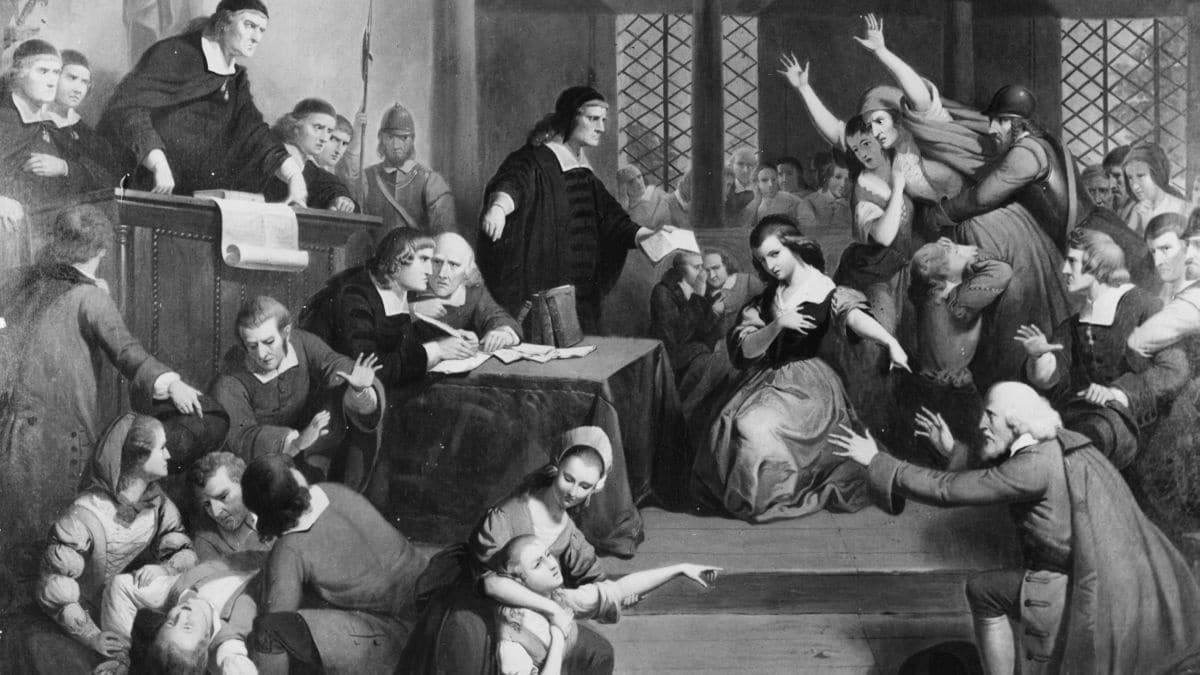Thomas Danforth was an influential figure in the early years of the Massachusetts Bay Colony. He served as a magistrate and was a landowner within the colony.

He had strong Puritan convictions and became known for his opposition to William Stoughton and the way the Salem Witch Trials were conducted. He would not participate much at the beginning of the trials, but he would become a major player towards the end, which would help end the trials.
Early Years in the Colony
Thomas Danforth was born across the ocean in Suffolk, England, to his father, Nicholas Danforth, and mother, Elizabeth Symmes.
In 1634, he would migrate from England to Massachusetts Bay with his father and other siblings. His family was fleeing England due to their persecution of the Puritans.
This persecution would cause the Great Migration to New England.
Nicholas would quickly become a leading citizen of the colony and purchase land in Cambridge. Four years after his arrival in the New World, Nicholas would die and leave his estate in the care of his children, of which Thomas was the oldest.
In 1643, Danforth was admitted a freeman of the colony, which conferred on him the right to vote and to participate in the colony's political affairs.
He would quickly rise up the chain of command in the colony. He became the Treasurer of Harvard in 1650 and would serve the college for over a decade.
From 1659, he sat on the colony's council of assistants and was elected deputy governor in 1679. In 1665, Danforth was a member of a commission that oversaw the extension of Massachusetts colonial authority over the territories of what is now southern Maine, which colonial surveyors had determined to fall within its borders.
When King Philip's War broke out in 1675 (pitting many Native American tribes of southern New England against English colonists), Danforth was involved in some of the events of the war. Many colonists distrusted the Praying Indians (Christianized Indians living peacefully in communities on the outskirts of English towns), some of whom were attacked by mobs of English settlers seeking revenge for attacks on their communities.
Danforth, along with Daniel Gookin and the Indian missionary Reverend John Eliot, was a vocal supporter of the Praying Indians and worked to prevent some of these excesses at some personal risk.
Danforth would continue to serve faithfully and would be known for his opposition to the English crown. This opposition was not always the most popular position in Colonial America and would cost him some appointments despite his qualifications.
Salem Witch Trials

Hysteria concerning witchcraft began to surface in Salem in 1692. At the time of this hysteria, Thomas Danforth was the acting governor, and he observed some of the early proceedings.
His name would fade from the records when Governor William Phips arrived and assumed the position of Governor. Phips would establish the Court of Oyer and Terminer, to which Danforth was not assigned.
He became a sharp critic of how William Stoughton conducted the trials and his indiscriminate use of spectral evidence. Danforth accused Stoughton of presuming guilt rather than assuming innocence.
The use of spectral evidence greatly disturbed him as well. With the allowance and dependence on spectral evidence, the accused had a hard time defending themselves.
In a letter by Thomas Brattle on October 8, 1692, Danforth is described as among a select group of "several about the Bay, men for understanding, judgment, and piety... that do utterly condemn the said proceedings, and do freely deliver their judgment..."
A new Superior Court was created to oversee the trials. Thomas Danforth would serve on this court, and spectral evidence would not be allowed. In protest, Stoughton removed himself from the court because he believed spectral evidence should be used.
The trials began to quickly end with few convictions and no executions. Danforth would be one of the men that would help end the terrible trials.
He was sympathetic to the plight of individuals accused, relocating some of them to his lands west of Boston; Salem End Road in Framingham is part of the area where they settled.
Thomas Danforth died in 1699.
